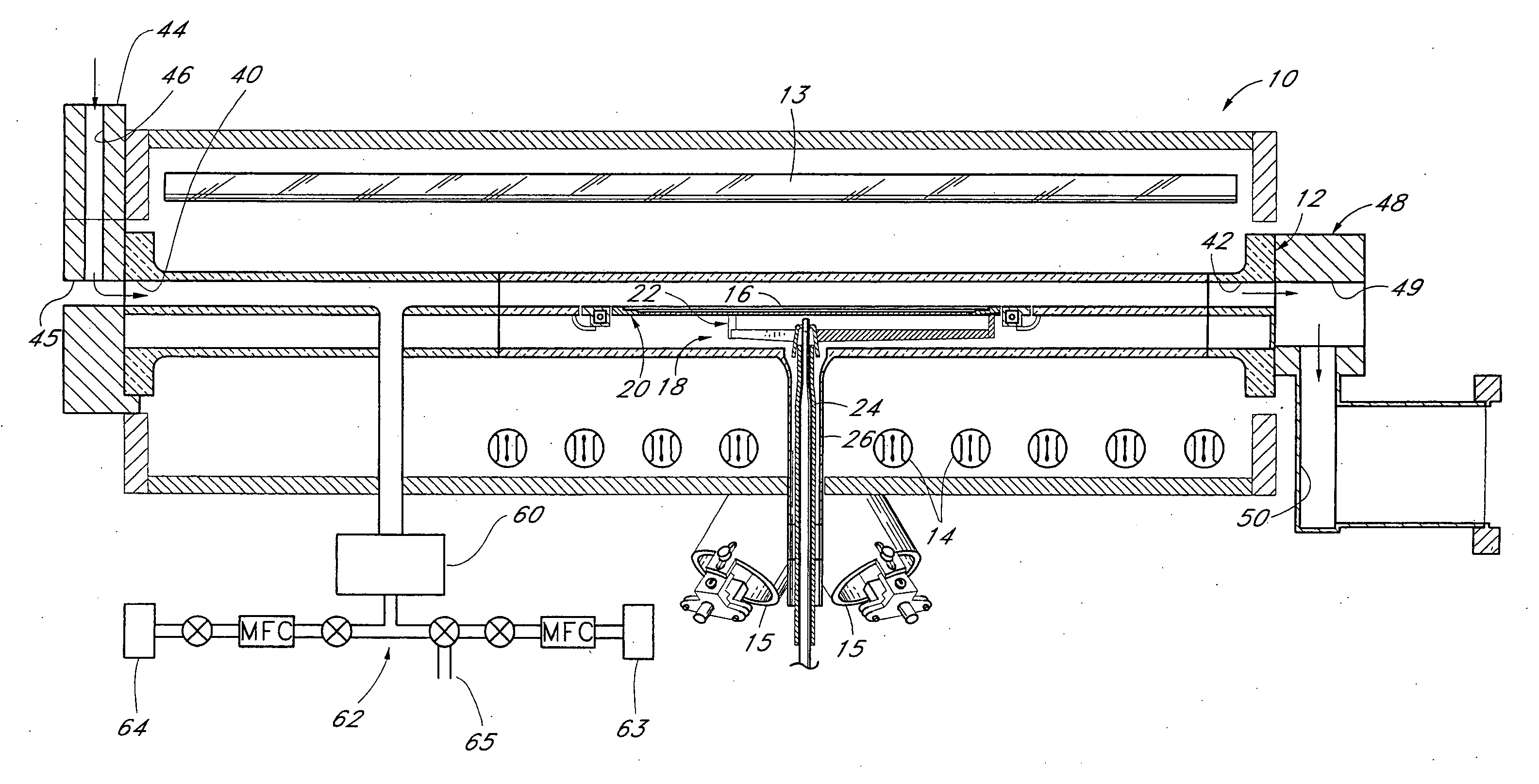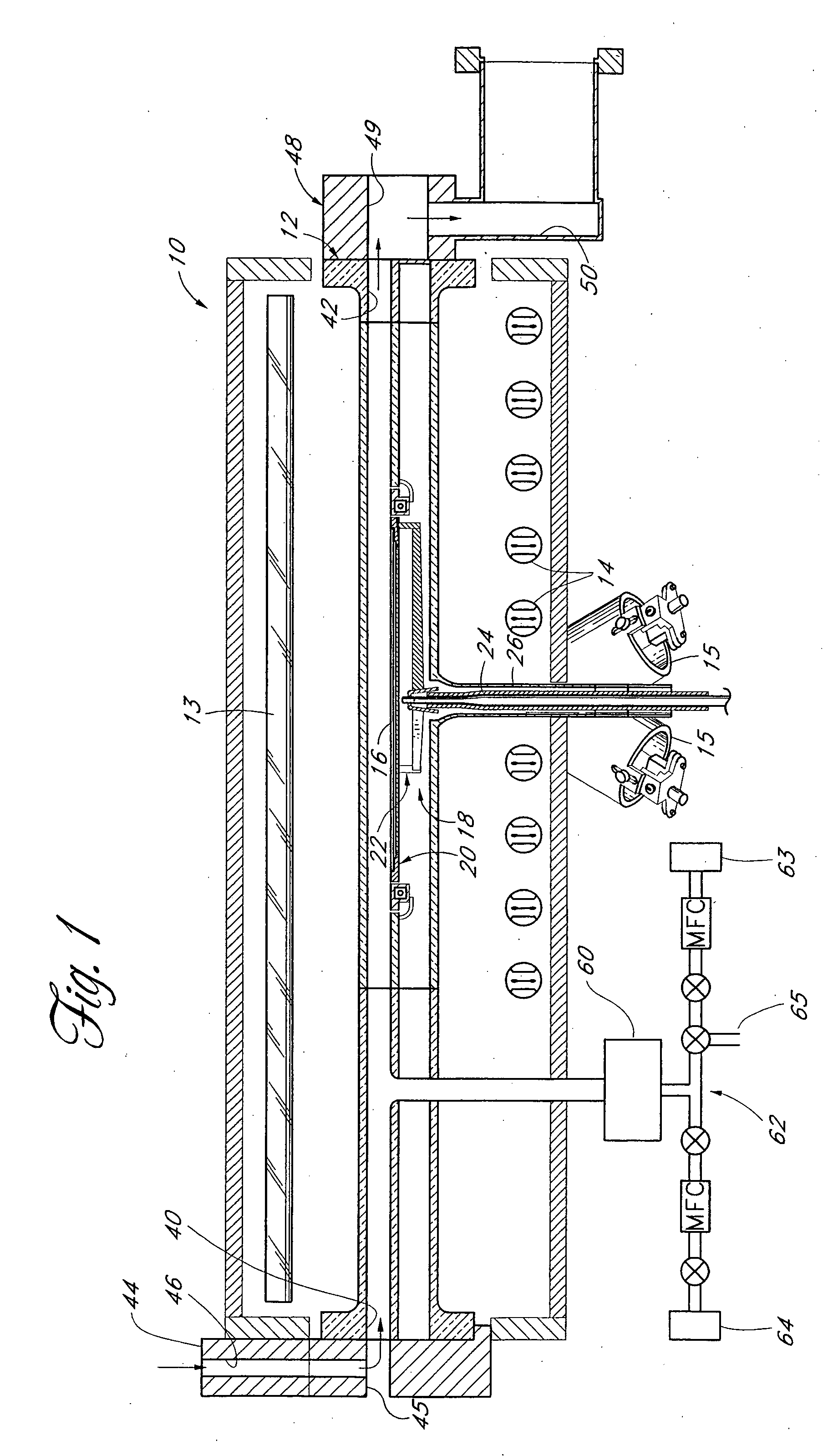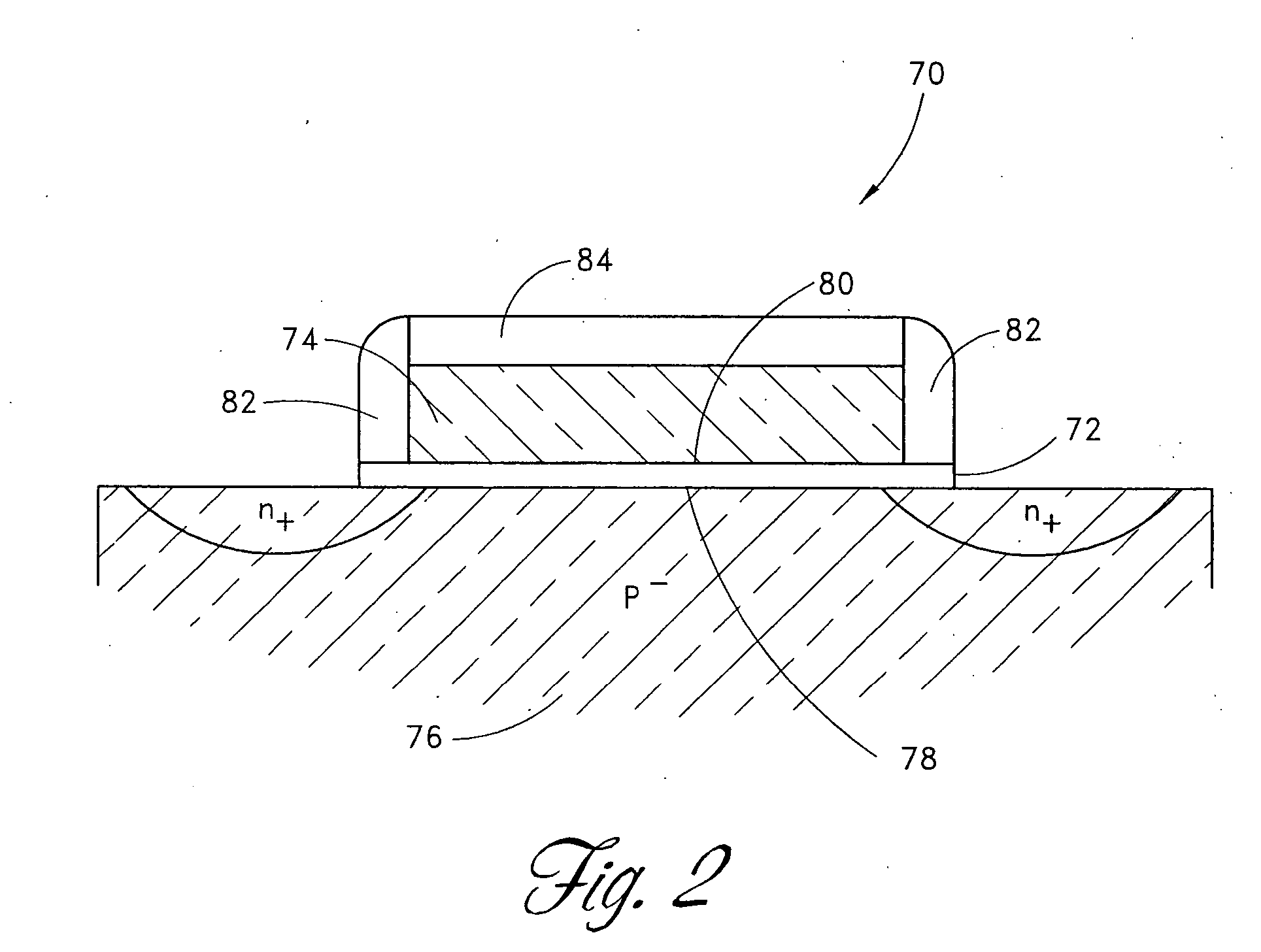Thin films
- Summary
- Abstract
- Description
- Claims
- Application Information
AI Technical Summary
Benefits of technology
Problems solved by technology
Method used
Image
Examples
example 1
[0152] First, an ALD process is used to deposit a non-graded layer of tungsten nitride carbide as a barrier layer. This is achieved through a first cycle that comprises supplying TEB, purging, supplying WF6, purging, supplying NH3, and purging. This first cycle is repeated a number of times, in a plurality of first cycles, to establish the barrier layer. Next, while the plurality of first cycles occurs, a second cycle is interspersed between the first cycles in the plurality of first cycles. In other words, the second cycle is added intermittently with the plurality of first cycles. This second cycle comprises supplying a copper-precursor, purging, supplying a reducing precursor, and purging. This second cycle is repeated a number of times, in a plurality of second cycles, which occurs during the plurality of first cycles to establish a transition layer. The transition layer will comprise both WNC and copper. The frequency of the plurality of second cycles starts off initially low, ...
example 2
[0181] This Example describes how a WNC, W, Cu layer can be created, as shown in FIG. 15A. First, WNC is deposited via cycles of ALD until a desired thickness is achieved. TEB is introduced to the chamber at a flow rate of 200 sccm for 2.0 seconds. The substrate is set to a temperature of 300° C., purged, WF6 is introduced at a flow rate of 50 sccm for 0.3 seconds, purged, NH3 is introduced at a flow rate of 200 sccm for 1.0 seconds, and then purged in a first cycle. This cycle is repeated until the desired thickness is achieved. Following this, the plurality of second cycles is started. WF6 is introduced at a flow rate of 30 sccm for 0.5 seconds, purged, disilane or diborane is introduced at a flow rate of 500 sccm for 2 seconds, and then purged. This is repeated until the desired thickness is achieved. Following this, the plurality of third cycles is started. Cu-precursor is introduced at a flow rate of 100 sccm for 2 seconds, purged, the reducing precursor is introduced at a flow...
example 3
[0183] A substrate is placed into a reaction chamber. First, a cycle involving introducing TEB, purging, introducing WF6, purging, introducing NH3, and purging is performed and repeated. The cycle is repeated a sufficient number of times to create a desired thickness.
[0184] Next a graded layer between the WNC layer and the following W layer is created. This process comprises alternating between the first cycle described above and a second cycle with varying frequencies. The second cycle comprises introducing WF6, purging, introducing disilane or diborane, and purging. The frequency of the occurrence of the first cycle, initially, is very high, while the frequency of occurrence of the second cycle, over the same time period is relatively low. However, as additional layers are added, the frequency of occurrence of the second cycle increases and the frequency of occurrence of the first cycle decreases. Initially, the first cycle occurs 10 times for every time the second cycle occurs. ...
PUM
| Property | Measurement | Unit |
|---|---|---|
| Fraction | aaaaa | aaaaa |
| Temperature | aaaaa | aaaaa |
| Temperature | aaaaa | aaaaa |
Abstract
Description
Claims
Application Information
 Login to View More
Login to View More - R&D
- Intellectual Property
- Life Sciences
- Materials
- Tech Scout
- Unparalleled Data Quality
- Higher Quality Content
- 60% Fewer Hallucinations
Browse by: Latest US Patents, China's latest patents, Technical Efficacy Thesaurus, Application Domain, Technology Topic, Popular Technical Reports.
© 2025 PatSnap. All rights reserved.Legal|Privacy policy|Modern Slavery Act Transparency Statement|Sitemap|About US| Contact US: help@patsnap.com



